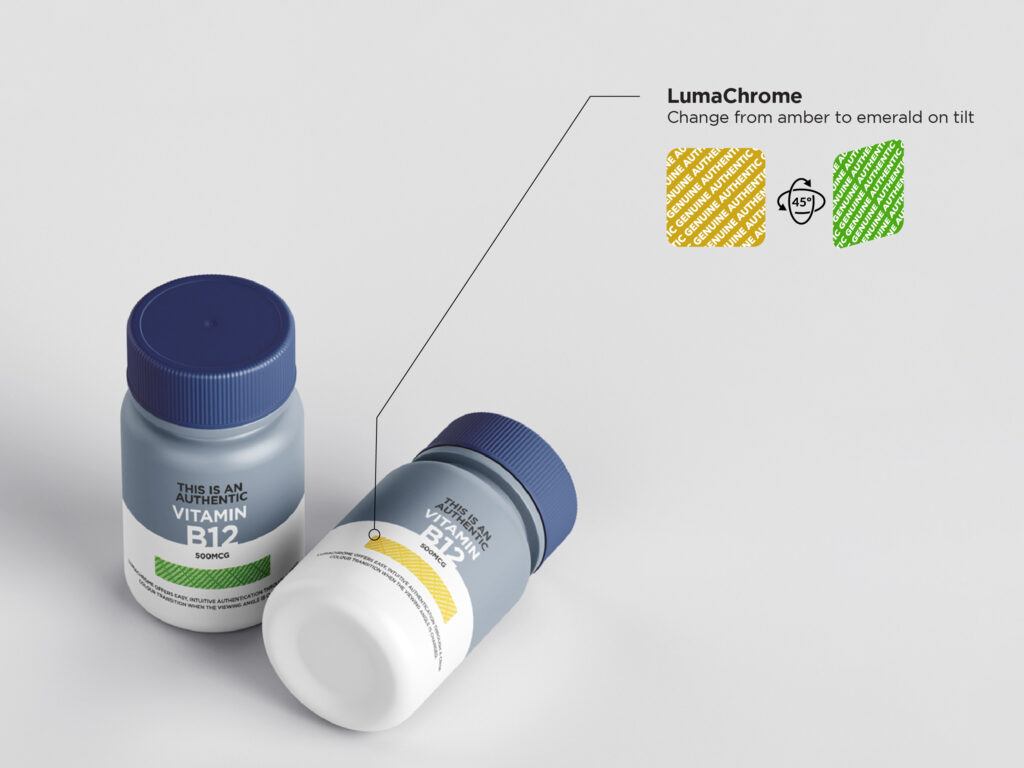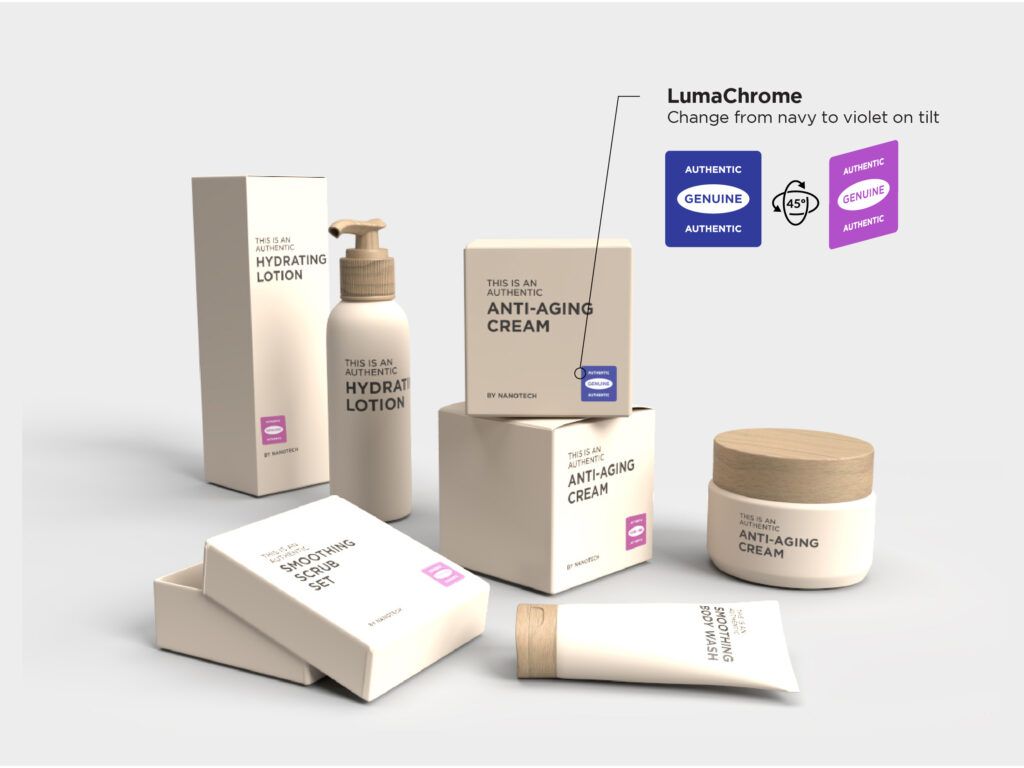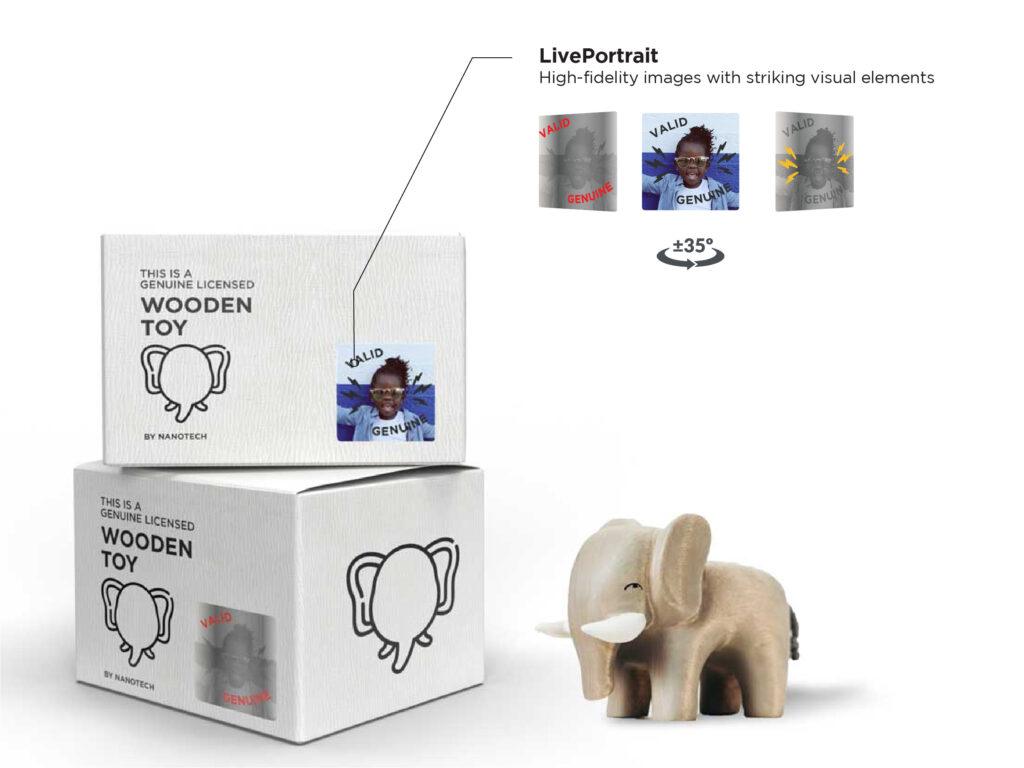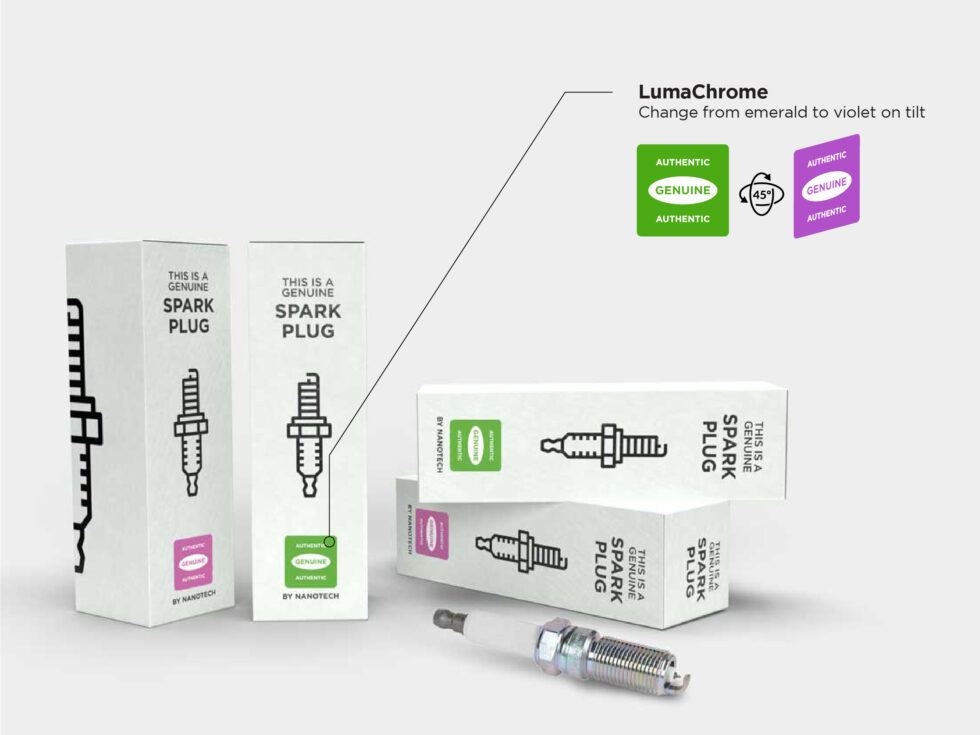Manufacturing and trafficking of counterfeit goods poses a substantial health and safety threat to consumers. It impacts the growth of legitimate brands and their consumers through lost revenue, replacement costs and downtime. Fake products are not just a direct attack on the name and value of a recognized business, but can cause harmful, and sometimes fatal, consequences for the unsuspecting buyer. According to the Global Brand Counterfeiting Report, by ResearchAndMarkets.com the amount of total counterfeiting globally is set to reach 1.82 Trillion USD in 2020.
Crises often present new opportunities for organized-crime groups, and the current COVID-19 pandemic is no different. Global counterfeiting groups have sought to exploit the shift of consumer buying behavior to online channels. Organizations that opt for generic labels with no overt brand protection solutions or using legacy technologies or those that do not invest in secure track-and-trace solutions are highly susceptible to counterfeits and grey market diversion. In the US, in Fiscal Year 2020, CBP seized 26,503 shipments containing goods that violated intellectual property rights. These counterfeit goods represented losses to brands of nearly $1.3 billion.
Some of the most dangerous counterfeit products are those that are directly ingested or placed in contact with the body. Fake pain medication, cardiovascular drugs, and antibiotics have been responsible for many deaths all around the world. There has also been numerous instances where fake cosmetics and perfumes have burned unwary consumers or caused dermatitis. Counterfeit electronics with batteries can leak acids, cause explosions, or start fires. Below is a list of products that are particularly dangerous when targeted by counterfeiters:
- Pharmaceuticals
Injury and Death by Counterfeit Medicine
Packaging Europe recently published statistics stating the $200 billion pharma counterfeit drug market is growing by 20% annually. This disturbing growth is twice the rate of the real pharmaceutical market, and accounts for 2.5% of the worldwide pharma market. Fake medicine can often include incorrect dosages or entirely lack the active ingredient that makes the genuine drug effective. Many drug manufacturers and distributors are actively pursuing greater visibility of their supply chain operations in order to deter counterfeiting. To combat advanced counterfeiters, companies should opt for advanced brand protection security features such as nano-optic labels that implement unique authentication effects, serialization along with a combination of barcodes, QR codes, microtext and hidden images. The same technology and sensors can be utilized to supervise variables such as factory seal integrity, dosage compliance and environmental state to trace products from production to delivery. Movement can be monitored in real time by NFC and RFID aided packaging, allowing for instant alerts should a shipment be diverted or tampered with. In this way manufacturers, distributors, and even minor supply chain partners can be assured that they are dealing in authentic products that can be readily verified.

2. Cosmetics
“Fake-Up” – Damaging and Deadly
The international cosmetics industry is valued at around $523 billion and is projected to reach $805 billion by 2022. Cosmetics rank in the top-five counterfeit items manufactured, according to the Organization for Economic Co-operation and Development. And, with the growth of social media, e-commerce it is easier than ever for counterfeiters to market their fake products to consumers. Figures from US Customs and Border Protection shows that counterfeit products now cost the cosmetics industry over $75 million every year. In the EU, it is estimated that the legitimate industry loses approximately €4.7 billion of revenue annually (over 7% of the sector’s sales) due to the presence of counterfeit cosmetics, perfumes, beauty, and makeup. Personal care products such as shampoos, conditioners, sunscreen, toothpaste, body oils, shaving creams and deodorizers are also a contributor. This translates into employment losses of approximately 50,000 jobs. (Source)
The application of counterfeit makeup or ‘Fake-Up’ can be damaging and sometimes even deadly. Government investigations have uncovered fraudulent cosmetics containing known carcinogens such as beryllium, arsenic and cadmium; others have exhibited elevated concentrations of toxic heavy metals like mercury and lead. Fake anti-aging products and serums are particularly susceptible to carcinogens—along with high levels of aluminum and dangerous levels of bacteria from sources such as urine. Simple elements of packaging like brand colours, logos, cartons etc. can be duped, but it is extremely difficult to replicate security labels and tamper-evident seals. If there is no clear authentication process for consumers, fake products can cause conditions like rashes, acne, psoriasis, and eye infections. Click here to learn about security foil and custom labels backed by novel anti-counterfeit technology for the cosmetics industry.

3. Baby products & toys
Toxic Toys – Cute, Counterfeit, and Lethal
According to the Toy Association, Global toy sales reached $90.7 billion in 2019 and this industry is a top target for counterfeiters. With the COVID-19 pandemic and increase of online toy sales during the holiday season, there has been a steady increase in the quantity of infringing and unregulated products. Toxic chemicals like phthalates and lead found in counterfeit toys, baby formula and children’s clothing can damage the reputation of the original brand that have been making families happy for generations. Children are also at risk of choking due to poor quality toys and loose parts. The Local Government Association, (represents councils in England and Wales) warned that counterfeit, unsafe toys typically flood the market in the run-up to holiday season as criminals exploit a surge in demand for “must-have” and sold-out items. Recent toys confiscated include over 54,000 teddy bears that posed a choking hazard, audio items that surpassed legal decibel limits for toys which could damage a minor’s hearing and electric scooters without safety documentation. Without secure authentication such as nano-optic authentication labels, trademark infringing games can use popular toy manufacturers’ branding on their own products, falsely leading consumers to believe it is a new launch from the same trusted source. There have also been multiple instances of children, teens, and parents unable to distinguish authentication labels of real products vs unlicensed merchandise that use duplicate characters or content. Infringing goods could include counterfeit products, trademark infringing products, unlicensed merchandise, and knock-off products. For baby formula and toddler products, any fake product is not just a diversion issue but a safety issue because counterfeiters do not conduct testing to ensure consumer safety. Click here to learn more about protecting your toy or youth entertainment brand with nano-optic security labels.

4. Electronic Components
Hidden Hazards of Chop-Shop Electronics
The manufacture of counterfeit electric, electromechanical and electronic (EEE) parts is not a new problem for the industry, but it is a problem that continues to cost brands billions of dollars annually, jeopardizes national security initiatives, and harms the individuals buying non-authentic products. According to the Alliance for Gray Market and Counterfeit Abatement, it is estimated that legitimate electronics companies miss out on about $100 billion of global revenue every year because of counterfeiting. Statistics by the Semiconductor Industry Association (SIA) reveal that the counterfeiting of electronic parts in the US, cost the computer chip industry more than $7.5 billion in revenue annually, translating into 11,000 lost jobs. Since counterfeit parts often have inferior quality and different specifications, they may represent a hazard if incorporated into mission critical systems such as military equipment, aircraft navigation, life support, or space vehicles. The financial repercussions of counterfeit components reach far beyond the cost of merely replacing the items. For example, in certain higher-end electronic systems, a component worth $2 can cost as much as $20 to $200 to replace if it is found to be a fake after it is mounted on a circuit board. If a phony component is installed in a larger system such a production line, a failure or malfunction could lead to significant commercial harm through several hours’ or days’ worth of unexpected downtime. This cost is not solely financial, though – counterfeit breakdowns are often hazardous in nature, leading to widespread damage to peripheral equipment and pose a risk of injury to employees. Counterfeit consumer electronics also cause injuries, fires, and deaths. Click here to learn about effective approaches to avoiding counterfeit electronic components.

5. Sports Equipment
Games Up! Counterfeits Fail to Protect Players
“Fans deserve the real deal: Only purchase known brands from known sellers that bear the official holographic marks of authenticity.”
– David Hirschmann, President & CEO of the U.S. Chamber’s Global Innovation Policy Center
The sports industry has been dealing with the challenges posed by fake, unauthorized goods for years. Counterfeit sports merchandise and safety gear such as knee pads, helmets not only fail to protect the players from injuries but also compromise performance. In addition to apparel and shoes, fake climbing gear, ropes, harnesses and cam equipment pose serious and immediate danger to consumers. Counterfeit sports commodities are made of substandard materials that do not go through rigorous quality checks and are easily damaged. Fake sporting goods can tear or break during full-contact/ aggressive sports amplifying injuries, rather than protecting customers. Every year, brands loose revenue as fake sports jerseys, hats, cell-phone accessories, and thousands of other bogus items are sold to unsuspecting consumers. Nanotech is a leader in protecting sports equipment and team memorabilia using leading-edge nanotechnology authentication labels. Our advanced security foils and labels seamlessly integrate into hangtags for merchandise, smart packaging of sports goods, and multiple substrates. Nanotech’s brand protection products invite consumers and fans to engage with the products to ensure they are genuine. Click here to learn more.
Counterfeits aim to mirror the originals, often making it difficult to identity them as fake. However, few of the following traits can help identify them:
- Unusually low price.
- Missing security/authentication labels.
- Strange place of sale e.g. third-party seller online, market or train station.
- Low-quality packaging and spelling mistakes.
- Differences in product and/or packaging e.g. colour, shape and font size.
- Missing information e.g. batch number, PAO symbol etc.
- Fake ‘limited edition/ ‘new launch’ collections to explain the differences in appearance from genuine manufacturers.
- Inferior consistency or texture.
- Absence of tamper-evident seals.
Brands in these industries are advised to:
- Regularly update and refresh their security labels and packaging with novel technology that is extremely difficult to replicate.
- Invest in technologies that make packaging and products less vulnerable to counterfeiting and to secure their movement within their logistics network.
- Employ security labels designs that are simple to understand and offer quick authentication to customers through unique visual effects like on-off, on-invisible, or always on images.
- Work with an integrated team that addresses counterfeiting, product tampering, track & trace, theft, and diversion issues.
Businesses looking to save money by avoiding brand protection solutions on their products open themselves up to counterfeiters which leads to lost revenue and irreparable damage to their brand. A strong brand with loyal customers is an important investment that should be protected. With counterfeits and shipments of unlicensed products on the rise, the need for innovative brand and counterfeit protection solutions combined with clear visibility of the supply chain is vital to brand owners. Contact us to request samples or to schedule a demo with one of our anti-counterfeiting experts.